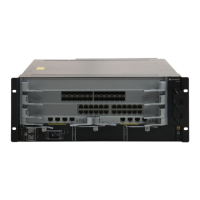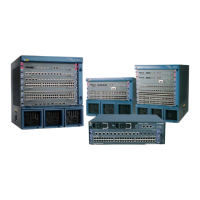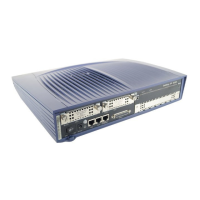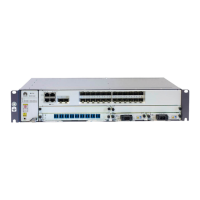2. Run:
traffic-policy policy-name global { inbound | outbound } [ slot slot-id ]
A traffic policy is applied to the system or a slot in the inbound or outbound direction.
Only one traffic policy can be applied to the system in the inbound or outbound
direction.
Only one traffic policy can be applied to a slot in the inbound or outbound direction.
A traffic policy cannot be applied to the system and a slot simultaneously.
– After a traffic policy is applied to the system, the system performs traffic policing
for all the incoming or outgoing packets that match traffic classification rules.
– After a traffic policy is applied to a slot, the system performs traffic policing for
all the incoming or outgoing packets that match traffic classification rules on the
slot.
l Applying a traffic policy to an interface
1. Run:
system-view
The system view is displayed.
2. Run:
interface interface-type interface-number [.subnumber ]
The interface view is displayed.
3. Run:
traffic-policy policy-name { inbound | outbound }
A traffic policy is applied to the interface in the inbound or outbound direction.
Only one traffic policy can be applied to an interface in the inbound or outbound
direction.
After a traffic policy is applied, the system performs traffic policing for the packets
that pass through this interface and match a traffic classifier in the inbound or outbound
direction.
l Applying a traffic policy to a VLAN
1. Run:
system-view
The system view is displayed.
2. Run:
vlan vlan-id
The VLAN view is displayed.
3. Run:
traffic-policy policy-name { inbound | outbound }
A traffic policy is applied to the VLAN in the inbound or outbound direction.
Only one traffic policy can be applied to a VLAN in the inbound or outbound direction.
Quidway S7700 Smart Routing Switch
Configuration Guide - QoS 2 Traffic Policing and Traffic Shaping Configuration
Issue 01 (2011-07-15) Huawei Proprietary and Confidential
Copyright © Huawei Technologies Co., Ltd.
57

